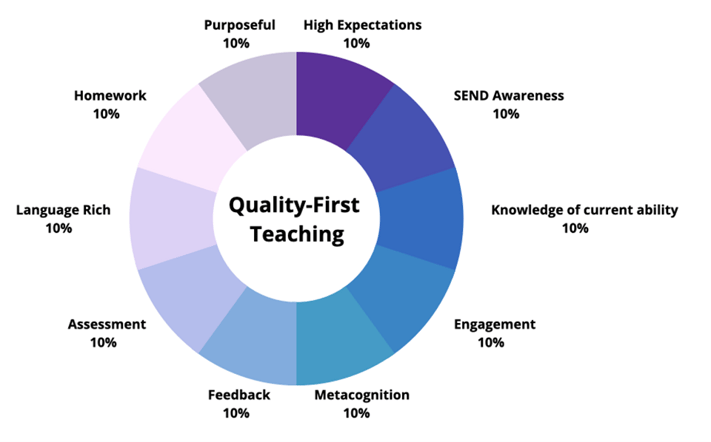How to differentiate home learning; here's 7 useful ways

Progress shifts only occur in the face of unexpected adversity; Harvard Business Review exemplifies World War II, where women were forced to undertake ‘men’s work’ and have never looked back. Due to national lockdowns beginning in March 2020, the world of education was forced online. Every learning setting now has an online learning provision and has continued to use these online platforms to set and assess home learning activities. This article explores the 7 most effective methods of differentiating online to maximise progress and student outcomes.
How has home learning evolved since 2020?
Home learning has evolved beyond recognition from the previous paper-based homework-setting structures many schools used. Paper-based activities were often lost in the bottom of book bags, forgotten about - and added significantly to the teacher’s marking workload. By moving to online platforms for setting homework, pupils, parents and teachers have become better connected, making learning more personalised and purposeful. The increase in online learning methods has expanded learning opportunities for pupils of all ages.
Is home learning as effective as classroom learning?
Quality-first teaching (QFT) is a phrase commonly used in schools; the minimum expectation for each lesson and teacher is to deliver high-quality and highly-inclusive learning. QFT is the initial wave in the 3-wave intervention model for supporting pupils with Special Educational Needs and Disabilities (SEND). QFT can differ from school-to-school depending on their ethos and leadership team's priorities; schools that have cohorts with larger than average SEND may have different priorities than a school with increased English Additional Language (EAL) pupils for example. Regardless of the main priorities of a school, QFT remains similar; we have included key aspects of what QFT is below.

Metacognition involves learning about learning! Some students may prefer active learning methods, whilst others retain more information through visual representations. Online learning can raise difficulties when trying to cater to all learning types. Differentiation of tasks are therefore essential when setting online homework, to try to appeal to the different styles of learning - but virtually.
What are the benefits of home learning?
Government commissioned reviews have highlighted the loss of learning due to pupils being away from classroom teaching with national lockdowns as significant and specifically impacting Key Stage 1 and 3 the most (having the most impact on those from disadvantaged backgrounds). However, there are substantial benefits available for pupils when they engage with well-organised home learning activities. The most considerable impact found with the introduction of home learning has been the unprecedented involvement parents can have with their child’s education. Monitoring homework set, completed and outstanding, is easy for parents and pupils. Pupils are now encouraged to problem solve and solution-find when they are unsure of a concept or have a question that may need instantly answering. Now, rather than raising their hand to ask; they are being encouraged to use the resources they have access to (differentiated modelled answers, Google, explanation videos). Responsibility surrounding the homework that is due to be completed is also increased with a well-organised home learning platform, with tasks to do, completed and marked ready to read all in the Weduc app.
How to differentiate home learning
What is differentiation?
Differentiation is the route taken to ensure each pupil can access a task or activity. These tasks can be differentiated in several different ways: Task; Choice; Support; Resources; Pace: Assessment; Possible answers
Typically, differentiation can be split into 3 learning abilities: support, core and extend. You may know these ability groups as different colours, animals or phrases. However, these are the 3 most common groups used when differentiating. The groups decided do not always rely on academic ability; if you are completing a debating activity where verbal discussion is the success criteria, you may use communication and language skills as the determiner for groups or opt for a mixed ability grouping to encourage working with different learning levels. It can often be thought that every lesson or task must be differentiated 3-ways, using 3 separate worksheets for the groups; this outdated process can be time-consuming for teachers and unmotivating for pupils. When using home learning methods, you can be creative with how you differentiate the pupil’s learning. We have collated 7 of the most effective ways to differentiate online learning:
 Task
Task
Just like classroom teaching, online activities can be adapted via the task set, including the number of questions asked or the type of task assigned. Differentiating via task is one of the most common methods of altering a task to suit the needs and abilities of all children. This can be done quickly online: tasks can be set for specific children and tailored to meet their ability need. Including the need to differentiate for both challenge and support, additional extension tasks can be easily added to individual children’s tasks to extend their set homework further.
 Choice
Choice
Reading is available surrounding pupils’ self-choice for deciding task levels and the impact this can have on motivation. By differentiating via choice, the children can determine a selection of tasks (often one per the 3 ability groups). The limitations behind this method of differentiation include the potential for children choosing either the easier route regularly and therefore not challenging themselves, or the challenging route and not understanding the task.
 Support
Support
An excellent method of supporting those children who may require more explanation, modelled examples or video tutorials. When uploading homework activities for the pupils, add several templates, worked examples and videos for extra guidance.
 Resources
Resources
One of the most effective methods of differentiation in the classroom is the use of additional resources to help support working processes and formulate ideas. At school, you may use practical manipulatives, images for inspiration, word mats, dictionaries or audio features to support reading. Many of these resources can effectively be used for home learning tasks. There are several useful websites for online resources: Maths; Science; English; Arts; Music; Sports
 Pace
Pace
Offering more challenges to your more able students with shorter time restrictions can be an effective and resource-free method of differentiation. Pupils can be given more or less time to complete a task, often paired with additional resources or support measures. Weduc has a simple time suggestion option to allow those who require additional support more time to complete a task.
 Assessment
Assessment
A helpful method of differentiation when marking an independently written piece of work, the assessment methods and expectations alter depending on the pupil's ability. A longer piece of writing or enquiry work may be expected to include more complex features for a more able pupil. In contrast, the assessment expectation for the pupil who may require additional support will be adjusted accordingly. Weduc has several options for simple, time-saving marking options: smiley faces, grades A-D, percentage marks, and comments.
 Possible answers
Possible answers
The no-ceiling approach to differentiation is noticed in several Singaporean Maths techniques. Children can challenge themselves to the appropriate level when an open-ended question is posed. This method is praised as the children draw upon their previously learnt knowledge to continue to suggest as many answers as possible. This can be a valuable method of differentiation for home learning activities due to the reduction in teacher workload. However, a limit may be necessary as some diligent families may spend hours on the one piece finding many possible answers.
For example: How many ways can you make the number 64?
Utilising all of the skills of addition, subtraction, powers, multiplication, BODMAS, division, fractions, decimals and percentages- to name a few!
Home learning is now a growing focus within all schools, with many opting to have a designated coordinator to ensure consistency and progress across the school. To ensure consistency, use a system where each class, year group and key stage can be easily tracked for the number of homework tasks marked and the time taken to complete. Get in contact with a Weduc expert today to discuss how Weduc can help to grow your home learning offer.



